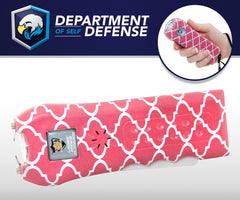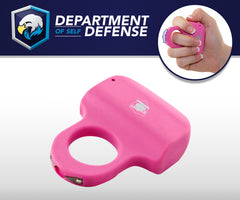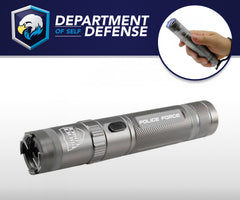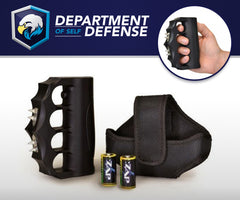Our team came across a report from WPTV in West Palm Beach discussing basic self defense tips for women. While we always recommend being prepared with products from our Tasers for Women and Women's Pepper Spray collections, its important to understand self defense situations rarely go according to plan. While the high heel self defense tip might not make sense for everyone, take some time to watch or forward to a family member, friend, or coworker and review our brief rundown of basic personal safety tips. If we have left anything off the list, feel free to add your own tips in our comments section.
Be Aware of Your Surroundings
One of the keys to avoid becoming a victim is to be aware of surroundings. Keeping your head on a swivel can help you to recognize anything that looks out of place and avoid situations before they become dangerous.
Situational awareness is knowing what is going on around you. While situational awareness can allow you to identify dangerous situations, it also can also keep you from being targeted.Criminals prefer having the element of surprise while targeting an unaware victim. Being distracted by using a smart phone, texting, or listening to music, can mark you as an easy target.
While there are various degrees of situational awareness, at a minimum it includes:
- Identify odd behavior: Does the individual demonstrate aggressive body language?
- Be aware of individuals focused or following you: Pay special attention for repeated glancing or staring.
- Identifying suspicious objects: Is the individual clutching or carrying an object or have an object, potentially a weapon, hidden in their clothing?
- Knowing exit locations and accessibility: Know exits from buildings, near-by public areas, and/or security offices.
- Use peripheral vision: Using peripheral vision allows you to watch a larger area without making direct eye contact
- Make use of barriers and structures: Stopping and leaning up against walls or buildings can allow you to see if you are being followed without having to look over your shoulder. Stopping or pausing while keeping a safe distance will allow you to determine if an individual who might be following you reacts suspiciously.
- Make use of reflective surfaces to see what is going on behind you.
- Try to remain calm. If you have been aware of your surroundings you likely saw this coming.
- Remember that personal property can be replaced; your physical safety is your top priority.
- Try to make use of barriers or structures. If confronted by more than one assailant, placing your back against a wall allows you to avoid surprised from behind. This should be done only when outnumbered or when you believe there to be a low likelihood of being able to escape as placing your back against a structure can help attackers corner you and keep you from escaping.
- Follow directions to the extent it doesn’t risk your physical safety. If you feel the criminal is simply looking to take anything of value, do not do anything sudden that would risk your safety.If you are going to move, move slowly, communicate your moves and explain why you are moving. Communicating will keep misunderstandings to a minimum and lower the risk of physical harm.
- Tell the attacker anything that would surprise or encourage them to leave as soon as possible. For example, say you are expecting visitors at any moment.
- Try to look for distinguishing scars, tattoos, height, and weight, it may be helpful for law enforcement in identifying the attacker.
- By this time your self-defense weapon should be positioned to be used if you feel the criminal may pose a risk to your physical well-being. This can include a tactical pen, pepper spray, or stun gun.
- Take action to defend yourself if you are attacked or sense danger. Remember, fighting back may put you are increased risk. Only fight back if you feel you would be at greater risk by doing nothing.
- If you are involved in a physical confrontation, understand that protecting your head, neck, and chest are vital to your survival. In any physical confrontation, you will likely be injured. The key to survival is limiting that damage to non-vital areas of the body.









